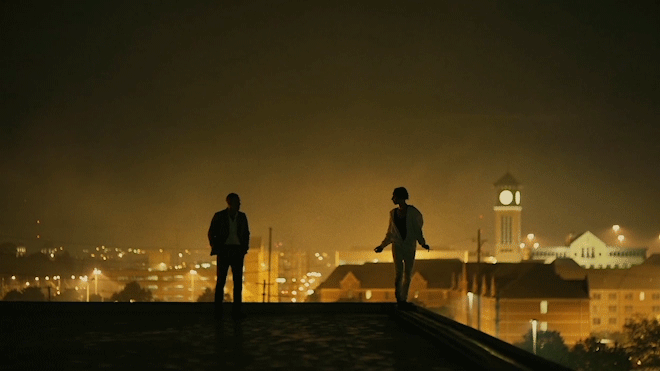This intimate portrait tells the story of Olympic athlete Melat Kejeta through exclusive footage of her preparations for the 2021 Tokyo race.
When you think of a sports documentary, you usually picture high-paced dramatizations and uplifting moments. But Philipp Groth’s ‘How to tell Gunshots from Fireworks’ takes a whole different angle to tell a completely different story. This intimate portrait tells the story of Olympic athlete Melat Kejeta through exclusive footage of her preparations for the 2021 Tokyo race. A restless woman of Ethiopian descent who has become a world-class athlete, Melat must defy adversity at a training camp in Kenya, just a stone’s throw from the country she was forced to flee nine years ago. Philipp graciously answered a few of our questions to get a little more insight on the film:
Can you tell us what inspired you to bring this story to life?
We first became aware of Melat in 2016 when she succeeded at the German Championships. Since longtime collaborator Tsellot (Melesse) herself has Ethiopian roots, we followed the runner with interest and learned that she could be stripped of her title due to a new rule of the German Athletics Association. We started to question the often hypocritical treatment of refugees in our home country Germany, especially in the sport world. Among those affected are women, who often face not only political problems but also gender discrimination. Melat is one of them, and so we contacted her to learn more about her experiences. From the conversations that lasted over a year, a friendship developed between the protagonist and the team, and the idea was born to make a short documentary film that would illuminate her incredible success story in a very personal way and at the same time and at the same time meets the aesthetic and dramaturgical requirements of modern cinema. Cinemas.
The pace and tone of the film is rather unique, particularly for a sports documentary. Can you tell us about the thought process behind the tone?
I think the film visually encapsulates a range of cultural, literary, and cinematic references—all connected to concepts and ideas about desire, dreams, power, and pain. Overall, the vision was to create a microcosm of memory, something that soaks you in quite fast. The tonality, sound design, and choice of having no direct dialogue, only voice over, is built on that premise.
I also imagined the film to feel like a glimpse into something that is usually hidden – so we shot a lot in the darkness.
What was the most challenging element for you to film?
I have to give Anton (Director of Photography) full credit in this regard. As you can imagine, the running sessions were incredibly exhausting and energy-sapping. Besides that, we had to be extremely careful to organize everything so that Melat didn’t get distracted. In the end, you have to keep in mind that the Olympics, the preparations, the goal of winning the medal – that was all real. Protecting her ability to achieve her goal was a Kafkaesque thought construct, because we had to protect her from ourselves.
What has this film taught you about filmmaking?
Being bold about taking a more intuitive and moment-driven approach that determines the path of each scene. Revisiting bits and pieces repeatedly to organize rhythm, texture, and structure in the process can be just as rewarding as shooting it precisely the way you wanted.
Do you have any tips or advice to offer fellow filmmakers?
I think short films are underrated in a lot of ways. When you look at the general interest and support structure, it becomes evident that there is a lack of understanding of their importance for young filmmakers. At least in my case they are incredible valuable as a tool to experiment and build dramaturgical and visual vocabulary. So I guess it’s more an advice to film grants: Build a culture around interesting short and interesting features will follow.
What are your favorite short films?
I quite like the classics: Student films from Scorsese (The big shave, 1967, dir. Martin Scorsese) and Nolan (Doodlebug, 1997, dir. Christopher Nolan). I think they are intriguing because you can see the raw artistic vision both directors developed further in the following years. “Looking for Langston” is one of my absolute favorites, shot in beautiful monochrome by Isaac Julien. But I also try to keep up with more contemporary work such as Rubberband’s “Don’t Go Telling’ Your Momma” and “Alone” by Garrett Bradley. She is one of my favorite filmmakers.




